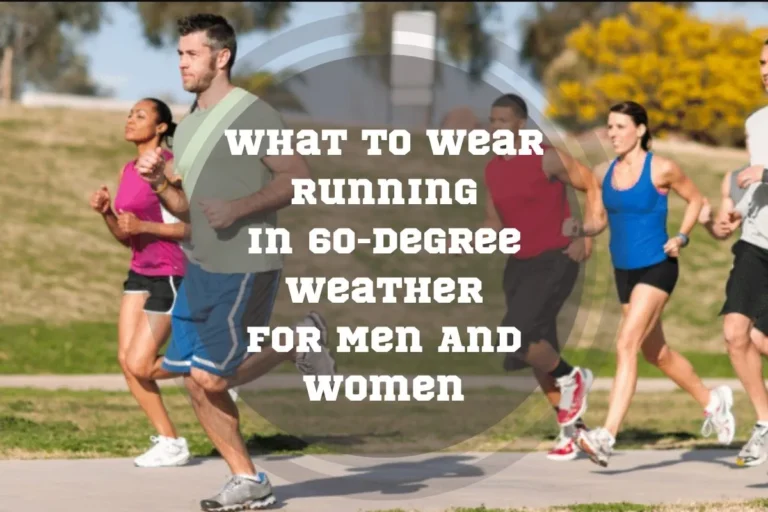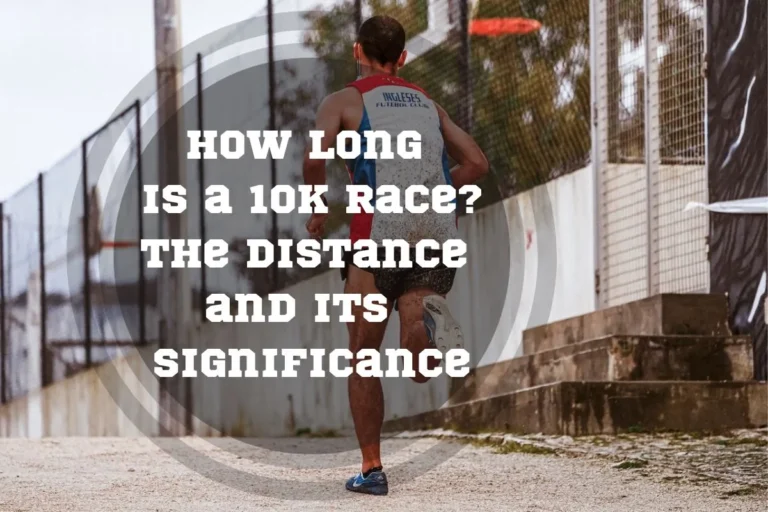Rucking Vs Running: Which One is Better for you?
Reviewed by: Sergii Putsov (PhD in Sport Science)
Looking for a slower pace exercise that still gets your heart pumping? Well, maybe rucking is for you! But, if you’re seeking something more intense, then you should consider running. That said, both are different from each other and thus, we will compare rucking vs running in this article.
Rucking combines the benefits of hiking socially while still improving your muscular endurance and cardiovascular fitness. In contrast, running is only focused on improving your cardiovascular health. So, which one is best for you? Well, let’s find that out together as we compare the difference between rucking and running.
Is running better than rucking?
The benefits of rucking vs running are similar. Running is high-impact jogging or sprinting, improving cardiovascular health, burning calories, and enhancing overall fitness and endurance. Rucking is walking with a weighted backpack, building endurance and strength with lower joint impact.
What is Rucking?
Rucking involves walking or hiking with a weighted backpack. Used in the army, rucking has garnered favor from many as an efficient way to get a cardio workout while avoiding the intensity and strain put on your body by running.
Like running, rucking has cardiovascular benefits, although it is a low-intensity interval training workout. This means that the rate at which you improve in fitness would be lesser when compared to running.
Instead of having only two variables that determine the intensity of the exercise, like distance and speed for running, rucking has three. It’s the added weight that comes from the backpack.
By adding weight to the exercise, you are engaging not only your lower body muscles but your upper body as well. In essence, the weight in your backpack, the pace at which you walk, and the distance you ruck lead to how intense your workout is.
This causes great improvements in muscular endurance. It’s helpful to mention that for rucking to be effective, the weight you carry and the distance you walk must add a degree of challenge.
Rucking can be done anywhere. All you need is a strong backpack and some weights. Once packed, you can head to a nearby hiking trail or ruck around your neighborhood. Rucking is a suitable alternative to running for anyone who is looking for an exercise that is kinder to their joints.
Is rucking bad for you because of the added weight on your back? Not necessarily. It should be fine if you have distributed the weight in your backpack correctly. If the weight is unevenly distributed, some issues may arise because the muscles on one side of your body will have to overcompensate for the other.

What is Running?
Running, on the other hand, is more versatile. While it is known as a high-impact exercise, runners can get some ease by running at a slower pace to gradually build cardiovascular endurance. Running refers to moving at a faster pace which usually leads you to jog or sprint.
Perfect for active individuals looking for an intense workout that produces faster results, running is a popular exercise method worldwide. Additionally, its health benefits are a plus. These include cardiovascular health, weight management, and stress reduction.
Running is also easy to get into. All you need is a decent pair of running shoes and a safe route, and you are all set. The intensity of running is measured largely on distance and speed. And the further you run and the faster your pace, the more pressure you put on your body, resulting in a tougher exercise.

Exploring the Difference Between Rucking vs Running
One of the most notable differences in rucking vs running is the intensity and added weight of using a backpack. Rucking and running also have vast differences in their impact on your joints. Studies have shown that high-impact exercises like running tend to cause more damage to your joints.
So does rucking help running? Rucking focuses on improving your cardiovascular and muscular endurance. And these strengths are necessarily needed for a runner. So, yes, it does.
The main differences between rucking and running
| Aspect | Rucking | Running |
|---|---|---|
| Impact on Joints | Low | High |
| Muscles Engaged | Whole Body | Lower Body |
| Weight Endurance | Emphasized | Not Emphasized |
| Caloric Expenditure | High | High |
| Mental Endurance | Emphasized | Moderate |
| Accessibility | Anywhere with a backpack | Anywhere |
| Equipment | Suitable backpack and hiking/running shoes | Running shoes and hydration pack |
| Injuries | Low | Moderate to high |
Impact on Joints and Muscle Engagement
Rucking is well known for its lower impact on joints and thus providing a more gentle workout for anyone with joint issues. It also engages a larger group of muscles. Key muscles include the quadriceps, hamstrings, calves, glutes, hip flexors, abdominal muscles, lower back muscles, adductors, etc.
Since you carry a backpack, your upper body and core muscles are now included in the workout to a greater degree.
On the other hand, running is an excellent exercise method for cardio fitness. However, it does put a lot more pressure on your joints due to the impact of each step you take. Joints which are most commonly affected are your hips, knees, and ankles. This is especially common if you run with bad form or on hard surfaces like road running.
Subscribe to Our Running Newsletter!
Get free running tips from renowned professional athletes and discounts from top-notch brands.
Weighted Endurance and Caloric Expenditure
The emphasis on weight is also a distinguishing factor between rucking and running. Rucking strongly emphasizes weighted endurance due to carrying additional weight in a backpack compared to runners who have to only carry their weight or a hydration bag.
Rucking for cardio becomes more challenging in case of a heavier bag or difficult route. This leads to a more intense workout and more ruck calories burned. Similarly, running increases in difficulty as you escalate your speed or distance. The more effort you put in, the more calories your body will burn.
Mental Strength
Both running and rucking require a certain level of mental strength. If you run long distances, such as marathons or ultra marathons, your mind must overcome mental barriers when you feel the need to give up.
Rucking, in this case, requires an extra layer of mental strength. Carrying weight over long distances can be challenging and often exerts pressure on your mental well-being as you push to the finish line.
Accessibility and Equipment
Running and rucking are both very accessible activities. For rucking, you simply need a suitable route that will provide you with a degree of challenge and enjoyment. Rucking around your town or finding a hiking trail are great options. To go running, you can start from your home and plan your own route. Or, you can travel to a cross-country trail suitable for runners and get your daily run in there. Either way, both sports are easily accessible.
You also need minimal equipment for rucking and running, this makes it even easy to get going. Runners need suitable running shoes and clothes to comfortably go on a run. At best, all runners need to go for a run is a suitable pair of running shoes. Ruckers on the other hand require a bit more equipment.
To go rucking, you would need to have a suitable pair of walking or hiking shoes, a good quality backpack, maybe some snacks and a sufficient amount of water. Plus, the aim of rucking is to improve your cardiovascular fitness by carrying weight over long distances, so, you will need to also purchase the correct weight for your backpack.
Injuries
Running does seem to have more injuries related to it. A study conducted by the University of Pittsburgh showed that out of 451 soldiers, 60% of injuries were to their lower body, including their knees, ankles, and feet.
Out of those, 18 injuries were from running, and only 3 were from rucking. This indicates running makes you more susceptible to injury risk in comparison with rucking.
How Are Rucking & Running Similar?
Rucking and running share many of the same actions. They both have cardiovascular benefits. By elevating your heart rate, both exercises promote a healthier heart and thus lead to improving your VO2 Max.
Running and rucking for weight loss also work when paired with the proper diet.
We know running is great for burning calories, but the same goes for rucking. Both exercises have proven to be great calorie burners.
Both these figures were calculated using a running and rucking calorie calculator. The further you ruck or run, the greater the calories will be burned.
Moreover, they both are accessible exercises to perform. For rucking, all you need to do is pack a backpack and get on the trails. Running is the same; literally, slap on a pair of running shoes and hit the road running.
Let’s examine the pros and cons of rucking and running.
The Pros and Cons of Rucking
Pros of Rucking:
- Low impact on Joints
- Full-body engagement
- Builds Muscular and cardiovascular endurance
- Develops mental toughness
- More social
Cons of Rucking:
- Slower pace due to additional weight
- Require more equipment (backpack)
- Undistributed weight can lead to joint problems
The Pros and Cons of Running
Pros of Running:
- High cardiovascular workout
- Improves bone density
- Easily adaptable for different fitness levels
- Limited equipment needed
Cons of Running:
- High impact on joints
- Limited upper body engagement
- Can become tedious
- Less social
Rucking vs Running: Equipment required
The equipment required for rucking and running is minimal. It would be best if you had a decent pair of hiking boots or running shoes for rucking. You can use an ordinary backpack, but purchasing a good-quality backpack is suggested. The backpack should be big enough to distribute weight properly and be comfortable on a long walk.
Here’s what you need to look for. Go for a backpack with sufficiently padded straps and a sturdy and supportive back panel. It should be big enough to store the weighted items you want to fill it with. A hydration pack would make a good addition to your backpack for convenience, but a water bottle would be sufficient as well.
Equipment for runners is even simpler. For running, all you need is breathable clothes and a pair of running shoes. If you’re looking to go all out, adding moisture-wicking clothing, a fitness tracker, and some reflective gear or UV protectors is the way to go.
If you’re doing road running, look for running shoes that absorb your impact as much as possible every time your feet hit the ground. This saves you a bit of pain in the joints later down the line.
Equipment required for rucking and running
| Rucking | Running |
|---|---|
| Hiking shoes or running shoes | Running Shoes |
| Suitable backpack | Moisture-wicking clothing |
| Rucking weights | Fitness tracker |
| Water Bottle | UV protectors |
| Suitable rucking attire |
Frequently Asked Questions About Rucking Vs. Running
Is rucking better for your knees than running?
Rucking is gentler on knees than running due to its lower impact. The weight carried during rucking reduces strain on joints, making it suitable for those with knee issues.
Can rucking replace running?
Rucking can sometimes replace running, offering cardiovascular benefits and engaging various muscles. However, it is slower and may not match running’s intensity or calorie burn requirements.
Is Ruck Running Bad for You?
When performed with proper technique and appropriate weight, ruck running is not inherently bad for you. It can add to your cardiovascular conditioning or strength-building. However, if done incorrectly, it can lead to injury.
Final Thoughts on Rucking Vs. Running
With exercises so similar, you can do them interchangeably. That said, keep in mind that they do have different benefits.
If you’re looking to up the intensity, slap on your running shoes and hit the road for a run after work to blow off some steam. In comparison, you can also go rucking which is a slightly lighter exercise, including walking with a backpack.
What do you prefer? Have you ever gone rucking? Or do you run more often? Please share your experiences with us in the comment section below.
Also read:
- 3 Day a Week Running Plan
- Is Running a Mile in 6 Minutes Good
- Cross Country VS Track
- Brooks Vs Asics
- Best Running Shoes For Ball of Foot Pain (Metatarsalgia)
- How to Fix Running Form
- Best Insoles for Flat Feet Running
- Pickle Juice for Runners
References:
- VO2 Max: How To Measure and Improve It // Cleveland Clinich: ttps://health.clevelandclinic.org/what-is-vo2-max-and-how-to-calculate-it/
- Calculates the exercise mets and calories burned by running. // Keisan Online Calculator: https://keisan.casio.com/exec/system/1350959101
- Rucking Calorie Calculator – How Many Calories Are Burned Rucking? // Ruck For Miles: https://www.ruckformiles.com/guides/calories-burned-rucking-calculator/
- Choosing the Right Running Shoe // UCSF Health: https://www.ucsfhealth.org/education/choosing-the-right-running-shoe
- Knee Pain and Problems // Johns Hopkins Medicine: https://www.hopkinsmedicine.org/health/conditions-and-diseases/knee-pain-and-problems
If you have any questions or suggestions, you can contact us via email – [email protected]






